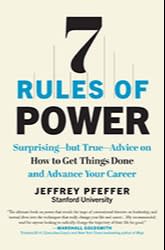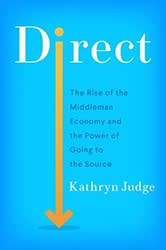FT business books: what to read this month
[ad_1]
‘How Massive-Tech Barons Smash Innovation — and How to Strike Back’, by Ariel Ezrachi and Maurice E Stucke
There is no lack of level of competition when it will come to textbooks tackling the problem of Large Tech monopolies. How Massive-Tech Barons Smash Innovation — and How to Strike Back again is another just one, indeed, but just one that finds its market in using intention at one of the core defences of Silicon Valley, that regulation — or the “wrong” regulation, as the organizations would have it — would stifle American innovation. (And if you do that, China wins.)
Ezrachi and Stucke — two acclaimed lecturers, one particular on each and every side of the Atlantic — make the scenario that the Tech Barons have for several years offered up an irresistible “ideological platter” to legislators that makes it possible for them to justify not getting a more difficult stance from monopolisation in tech. The ebook focuses on the Gafam team — Google, Amazon, Fb, Apple and Microsoft. The platter, a superb feast, is laid out in entrance of lawmakers through these providers immediately, but also opaquely-funded think-tanks, teachers and other bought and paid for commentators.
The principal training course is that Big Tech’s massive income have a immediate line to vast improvements — the smartphone, GPS, self-driving cars — when really, the authors define, that funds is normally put in on “innovations” and “disruptions” that cement electrical power and kill off opposition. Some of the e-book retreads previous ground in this debate: failings of present legislation and the decades-lengthy reluctance from regulators to enforce existing guidelines. But the discussion is moved on substantially with an urgent argument that legislators have to act now to shift their consideration from earlier offences to as an alternative using on what is coming down the keep track of.
This “duck hunting” solution — shooting where the duck is heading, not in which it is — would seem intelligent when taking into consideration the use of own data to power new models of promotion, a thing yet to register in the antitrust debate.
The book encourages much more adaptable guidelines that can adapt with the exact guile as Major Tech’s attempts to undermine them, enabling “tech pirates”, the up and coming innovators, to prosper exactly where just before they would be squashed. In all, it is a powerful argument that warrants a very good listening to: much from chilling innovation, the reserve concludes, reining in Major Tech may possibly be the only way to save it.
‘Building a Second Mind: A Verified Method to Organize Your Electronic Everyday living and Unlock Your Artistic Potential’, by Tiago Forte
Do you discover you wake up in the morning with your mind swimming with ideas and you really do not know where by to place them? Or you have an idea, or numerous thoughts and later on have completely overlooked them?
Setting up a Next Mind supplies a feasible option to storing and afterwards utilising these to some degree messy nuggets. We are subject matter to a each day information and facts overload, so Tiago Forte has around quite a few yrs experimented with and analyzed methods to support decide what forms of details are well worth preserving when we really don’t know how we might put it to use — whether it be at work or other regions of our life.
Here he lays out a thorough strategy to making use of digital instruments to feel a lot less bombarded and have much more time to imagine. “To correctly consider advantage of the electricity of a second mind,” he says, “we have to have a new partnership to facts, to engineering, and even to ourselves.”
1 of the first techniques is to pick a observe-taking app that ideal satisfies the way you want to organise your feelings — bearing in mind that your observe-having doesn’t have to be best, notes are just that, notes. And these “notes” can include every thing from helpful estimates scanned from a e book, to visuals and 50 % baked strategies that could appear to you at random moments.
Forte argues that in excess of time you are going to create 4 “essential capabilities”, which include revealing new designs amongst ideas and honing the new views you uncover between them.
Chapters information the reader via the “Code” — capture, organise, distil and categorical — and conclude with insights into critical digital organising practices. Nevertheless, the guide can, ironically, truly feel a minimal mind-boggling. So it is best to construct your note-having capabilities a minimal at a time or cherry select the bits that get the job done ideal for you.
‘The Product Black: How Black British Leaders Succeed in Organisations and Why It Matters’, by Barbara Banda
“To be fairly honest with you, Barbara, girls like you . . . don’t go to Oxford.” Leadership expert Barbara Banda — who has a PhD from that university — quotations a trainer as evidence of the barriers black professionals encounter from an early age.
Aimed at “anyone who wishes to comprehend what staying a lot more inclusive at work means”, The Model Black is a timely exploration of race in the place of work and what black workers can do to advance their occupations.
Drawing on interviews with about 30 Black British leaders in the general public and private sectors, the e book is divided into three parts. The most crucial is the second, exactly where Banda introduces her concept of “The Product Black”: an individual who, among other features, “knows how to respond to white fragility” — a contested phrase borrowed from US sociologist Robin DiAngelo to refer to the “defensive moves” lots of white folks make when challenged about racism — and “accepts they have to complete much better to be equal”.
Thoughts at the finish of each individual segment allow reflection — these types of as “How do you see the rate of change at your organisation in relation to the inclusion of black employees?” and “How do you reply when you see or listen to unacceptable conduct in your workplace?”
The e book concludes on an optimistic notice, in which the author speaks to young industry experts who discover with “The Design Black” but hope to move outside of it. As just one claims: “I want you to see the blackness, but I really don’t want you to see only the blackness. I want you to see me.”
‘7 Procedures of Electric power: Astonishing — but True — Assistance on How to Get Issues Completed and Progress Your Career’, by Jeffrey Pfeffer

Ever considering that the 19th-century English historian Lord John Dalberg-Acton wrote “power tends to corrupt, and complete energy corrupts absolutely”, power has experienced a combined standing.
In 7 Regulations of Energy Jeffrey Pfeffer, a professor of organisational conduct at Stanford College, is speedy to acknowledge that it can be employed for ill. Nevertheless his third guide on the matter argues that electrical power — when recognized effectively and applied to excellent impact — can be the catalyst for a greater feeling of career fulfillment and occupation progress.
Pfeffer’s important rivalry is that, considering that sorts of power are consistently in enjoy in the workplace, it is to a worker’s advantage to “understand the each day dynamics . . . of organizations”. For this reason his 7 tenets: “Get out of your very own way”, “Break the rules”, “Appear powerful”, “Build a impressive brand”, “Network relentlessly”, “Use your power” and, most importantly, “Success excuses nearly anything you may well have done to receive power”.
Chapter by chapter, Pfeffer cites the get the job done of other researchers and introduces genuine-globe situation scientific studies that neatly exemplify his arguments. Regardless of what their age, sector and goals, 7 Regulations of Electricity persuasively helps make the situation for all personnel to far better harness electrical power in order to influence their professional trajectories.
‘Direct: The Rise of the Middleman Financial system and The Electricity of Heading to the Source’, by Kathryn Decide

Several have occur to count on middlemen. Amazon and Walmart are just two illustrations Kathryn Judge attracts on in this book, detailing how they give customers accessibility to lower-priced food and other goods. But they also use these rewards to make individuals basically acquire things they do not have to have though also setting up considerable ability inside of the US economic system.
The points that make middlemen so useful “also help them to provide their own ends at the cost of the rest of us”, Decide writes. As a legislation professor at Columbia University, the author has examined the middleman overall economy for additional than a 10 years and below dissects how it operates in the US — from retailers to estate agents and financial institutions — and why people today need to change behaviors and, the place feasible, get started to go “direct”.
Judge appreciates that breaking a reliance on a massive supermarket on your doorstep is not easy and acknowledges “conflicted shoppers” who would like to depend on Amazon fewer but normally find the company is the only one particular that serves their wants (which, she details out, is what offers these behemoths their energy).
Her assessment of the middleman financial state reveals its darkish sides, this kind of as fragile provide chains and the force on suppliers to deliver items at at any time decreased prices. But Choose recognises the limitations of likely “direct”: she highlights that some immediate-to-shopper manufacturers could not in reality live up to the positive image they cultivate or adhere to the values on which they were being originally established.
Decide argues that modest shifts in direction of direct exchange can lead to a much more resilient economy, but she also presents guidance about how to select a middleman additional very carefully when it is needed to use a single.
[ad_2]
Supply connection
